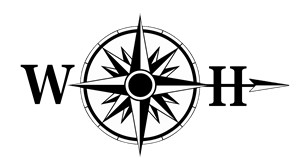Win A Marine Archaeology Course
In The Caribbean
Worth More Than £2,000
(Click here for further information)
Article #6
| Title: | Using Photomosaics In Wreck Site Investigation |
| Produced By: | Mike Haigh (Project Director Wreck Hunters) |
Photomosaics – a vital tool of the diving archaeologist
There are certain problems that diving archaeologists face which our compatriots on land do not have to deal with. In my view the three big ones are:
- The lack of time of time you have on the site, due either to the depth or conditions such as extreme cold.
- Secondly, limited visibility, many sites are by their nature in places of poor visibility caused by sediment which has aided their preservation.
- Finally, the inability to ‘show’ the site easily to the general public, as most people do not dive.
An approach that can at least help to mitigate these problems is to use photomosaics. Photomosaics are produced by taking overlapping vertical photographs and joining the images together. Traditionally, archaeologists have used photomosaics in four main ways:
- An ‘aide memoire’ giving an overview of the site.
- A display item used for fund raising and publicity.
- As one of a number of complimentary recording methods.
- As the only recording method available in a genuine ‘rescue’ situation.
So how do you go about creating one? In some situations, the only practical method that can be used is simply to ‘fly’ over a site to make up a pictorial view. But this will not provide completely accurate information due to a lack of precision and the absence of control information.
So, some form of physical structure is required to mount a camera on in order to produce images that will record the site accurately. This need not be a bulky construction; you simply need a photo tower and a set of ‘rails’ to run it along. The aim is to overlap each photograph by 40% to the previous one. The base of the photo tower is often made to fit a one-metre grid. This is sensible as it mirrors the grids that the divers drawing the site will use and allows for comparison of the records produced. The tower holds the camera parallel so that a true plan (or elevation) view is obtained. As the tower holds the camera steady this allows slower shutter speeds and smaller apertures, improving depth of field. The tower base also provides an easy reference point for determining the overlap between each shot.
Back on 1987 Andrew Bowley, myself and a group of students from Bournemouth Technical College managed to engineer such a structure without too much fuss.
In many ways getting the photographs is the easy part; the real trick is to produce an image that does not look like a load of prints just stuck together. Before the digital photographic era this was quite tricky. In those days each print was cut out, following the contour of some object, and then joined up. The edges of each print were peeled back so that they ‘blended’ into each other. For an even better result an accurate record the cut prints were soaked in water and the back peeled off so only the emulsion layer was left. The prints were then stuck to a mounting board with wallpaper paste.
Today you can use the ‘Photomerge’ programme in Photoshop. To illustrate the practical application of photomosaics I will take three examples. Off the Aeolian island of Panarea lies a site known as ‘Relitto Alberti’, a well preserved but jumbled wreck dated to the 1st Century AD. The main body of the wreck lies at about 40m. In the summer of 1987, the Oxford University Mare team produced a photomosaic which was to assist in focusing future work on the site to the most promising areas. Other methods of obtaining this analysis were hindered by the depth of the site and resulting limited bottom times. The method was simply to lay out ropes and have a diver ‘fly’ over the site. The resultant mosaic was good enough for publication.
The marble wreck of Isola Della Correnti, near the most southerly tip of Sicily, provided a different challenge. A Roman wreck dating back to the 3rd Century AD, after centuries under the sea the marble blocks were almost indiscernible from the rocks that surrounded the site – making a traditional photomosaic almost irrelevant as a visual spectacle.
However, a transverse run through the site produced a panoramic that showed the true majesty of the 350 ton cargo.
The third example is the Studland Bay Wreck, the remains of a Spanish trading ship from about 1500, lying just outside Poole harbour. The visibility on the site rarely bettered 2m so producing an accurate record of the starboard section, measuring 22.5m by 3.5m, was going to be a challenge. The challenge was met. When the photomosaic was compared to the divers’ drawings some ‘gaps’ in the survey record were identified. ‘The camera does not lie!’
Next time we look at the techniques used in excavating a wreck site.
Mike
